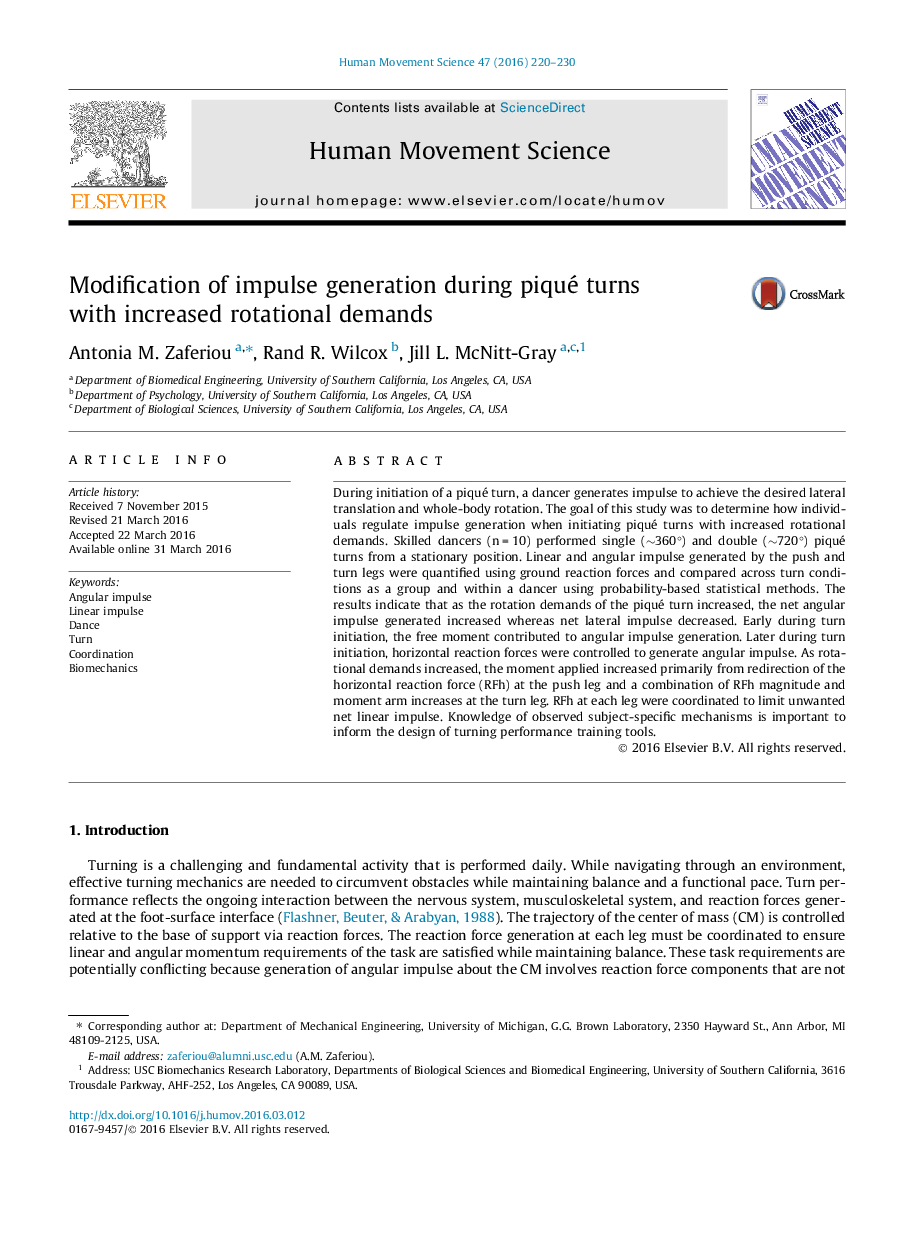| Article ID | Journal | Published Year | Pages | File Type |
|---|---|---|---|---|
| 7291522 | Human Movement Science | 2016 | 11 Pages |
Abstract
During initiation of a piqué turn, a dancer generates impulse to achieve the desired lateral translation and whole-body rotation. The goal of this study was to determine how individuals regulate impulse generation when initiating piqué turns with increased rotational demands. Skilled dancers (n = 10) performed single (â¼360°) and double (â¼720°) piqué turns from a stationary position. Linear and angular impulse generated by the push and turn legs were quantified using ground reaction forces and compared across turn conditions as a group and within a dancer using probability-based statistical methods. The results indicate that as the rotation demands of the piqué turn increased, the net angular impulse generated increased whereas net lateral impulse decreased. Early during turn initiation, the free moment contributed to angular impulse generation. Later during turn initiation, horizontal reaction forces were controlled to generate angular impulse. As rotational demands increased, the moment applied increased primarily from redirection of the horizontal reaction force (RFh) at the push leg and a combination of RFh magnitude and moment arm increases at the turn leg. RFh at each leg were coordinated to limit unwanted net linear impulse. Knowledge of observed subject-specific mechanisms is important to inform the design of turning performance training tools.
Related Topics
Life Sciences
Neuroscience
Cognitive Neuroscience
Authors
Antonia M. Zaferiou, Rand R. Wilcox, Jill L. McNitt-Gray,
